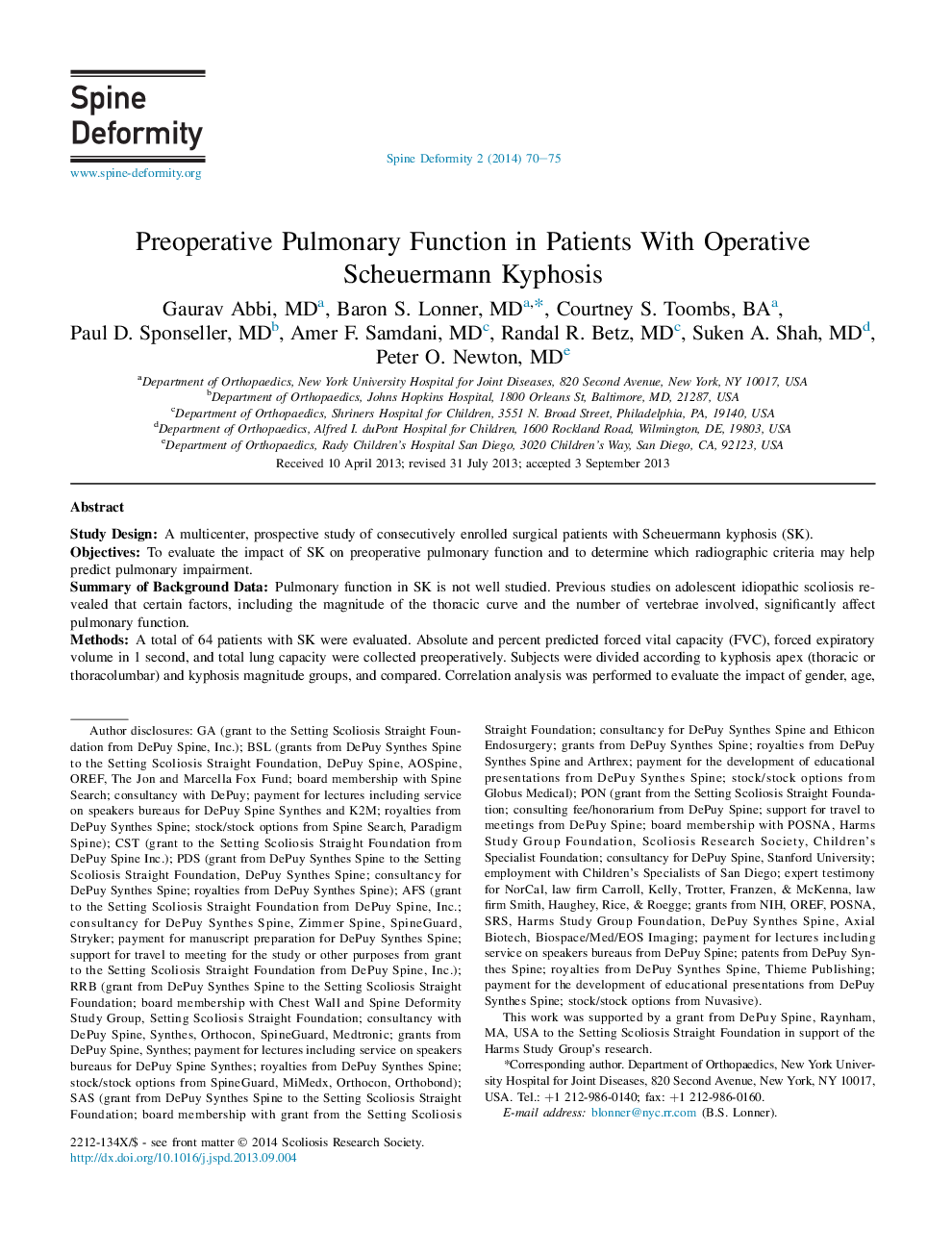| Article ID | Journal | Published Year | Pages | File Type |
|---|---|---|---|---|
| 4095429 | Spine Deformity | 2014 | 6 Pages |
Study DesignA multicenter, prospective study of consecutively enrolled surgical patients with Scheuermann kyphosis (SK).ObjectivesTo evaluate the impact of SK on preoperative pulmonary function and to determine which radiographic criteria may help predict pulmonary impairment.Summary of Background DataPulmonary function in SK is not well studied. Previous studies on adolescent idiopathic scoliosis revealed that certain factors, including the magnitude of the thoracic curve and the number of vertebrae involved, significantly affect pulmonary function.MethodsA total of 64 patients with SK were evaluated. Absolute and percent predicted forced vital capacity (FVC), forced expiratory volume in 1 second, and total lung capacity were collected preoperatively. Subjects were divided according to kyphosis apex (thoracic or thoracolumbar) and kyphosis magnitude groups, and compared. Correlation analysis was performed to evaluate the impact of gender, age, kyphosis magnitude, and apex on pulmonary function. American Thoracic Society guidelines were used to classify patients according to the severity of pulmonary impairment.ResultsMean age was 16 years (range 13–24 years), with 42 males. The percent predicted forced vital capacity was 95.8%, percent forced expiratory volume in 1 second was 92.5%, and percent total lung capacity was 106.2%. The percent predicted FVC differed significantly between the 71°–80° and 81°–90° groups (105% vs. 83%, respectively; p = .016) and the 71°–80° and greater than 90° groups (105% vs. 73%, respectively; p = .009). For percent predicted TLC, patients with greater than 90° had significantly lower average values than those in the 71°–80° range (79% vs. 115%, respectively; p = .016). Greatest kyphosis showed a fairly weak (r = –.24; p < .10) but significant correlation with percent predicted FVC. The percentage of patients with moderate to severe impairment (4%) was lowest in the 71°–80° range, which increased with increasing ranges of kyphosis magnitude: 81°–90° (11%) and greater than 90° (50%).
